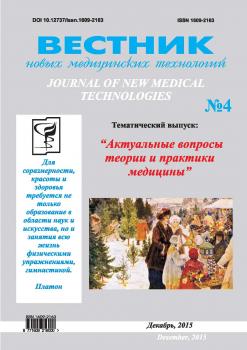Currently a significant place in the list of already existing and developing medicines that are associated with high hopes, take drugs created through genetic engineering and modern biotechnology. The foundations of these drugs are genetically engineered drugs on the basis of the substance of cytokines. A new trend in the system of medical correction of the course of wound process in recent years is the use of tumor necrosis factor. Development of dosage forms for external use, combining the structure of the active substances and excipients, acting on the wound healing process is the actual problem, in which one of the main places is local treatment with ointments, gels and liniments. The research presented in this article allows to confirming the hypothesis that “the tumor necrosis factor-alpha (TNF-alpha or TNF-alpha) is a key mediator in the process of wound healing, especially in protracted and chronic variants course of inflammation". The authors note that one of the directions in the creation of new forms of drugs TNF-alpha is the use of different polymers. Modified-polymers TNF-alpha are being actively studied, for example, in Japan and China. Currently, in many countries the development and extensive research on new forms of TNF-alpha are aimed at creation of effective new generation medications.
cytokines, tumour-alpha necrosis factor, wound of skin, reparative process.
1. Vasyutkov V.Ya., Protsenko N.V. Troficheskie yazvy goleni i stopy. M.: «Meditsina», 1993. 160 s.
2. Konservativnoe lechenie bol´nykh s prostrombof-lembiticheskim sindromom (PTFS), oslozhnennymi yazva-mi. Mestnoe lechenie ran / Grigoryan R.M., Blatun L.A., Ziganshina L.E. [i dr.]// Materialy Vsesoyuznoy konferentsii M., 1991. S. 19-20.
3. Gulyaev A.E., Rusak Yu.E. Tsitokiny - kak regulyatory ranevogo protsessa v derme. Fundamental´nye i klinicheskie aspekty okhrany zdorov´ya na severe, 2010.
4. Sovremennye vozmozhnosti i perspektivy mestnogo medikamentoznogo lecheniya gnoynykh ran / Datsenko B.M., Blatun L.A., Pertsev I.M. [i dr.]. Materialy Vsesoyuznoy konferentsii. M., 1991. S. 20-23.
5. Kotel´nikov V.P. Rany i ikh lechenie. M.: Znanie, 1991. 64 s.
6. Koval´chuk L.V., Gankovskaya L.V. Immunotsitokiny i lokal´naya immunokorrektsiya. Immunologiya. 1995. № 1. S. 4-7.
7. Shmelev V.A. Faktor nekroza opukholey, timozin-al´fa1 i interferon-gamma-immunomoduliruyushchie, protivoopukholevye i protivoinfektsionnye tsitokiny. M., 2006.
8. Nakano K., Abe S., Sohmura Y.. Int. J. Immunopharmacol. 1986. Vol.8. No.3. P. 347-355.
9. Leskovec N. K., Huljev D., Matoh M. Wounds in vascular and metabolic diseases. Acta Med Croatica. 2012. No 66. R. 93-97
10. Lawall H. Treatment of chronic wounds. Vasa. 2012. No 41(6). R. 396-409.
11. Gethin G. Understanding the inflammatory process in wound healing. Br J Community Nurs. 2012. R. 17-20.
12. Kiwanuka E., Junker J., Eriksson E. Harnessing growth factors to influence wound healing. Clin Plast Surg. 2012. No 39(3). R. 239-48.
13. Chodorowska G., Roguś-Skorupska D. Cutaneous wound healing. Ann Univ Mariae Curie Sklodowska [Med]. 2004. Vol. 59. No 2. R. 403-407.
14. Hérodin F., Drouet M. Cytokine-based treatment and new approaches. Clin Sci (Lond). 2005. No 33(10). R. 1071-1080.
15. Barrientos S., Stojadinovic O., Golinko M.S., Brem H., Tomic-Canic M. Growth factors and cytokines in wound healing. Wound Repair Regen. 2008. No 16(5). R. 585-601.
16. Thomson A., Lotze (Eds.) M. The cytokine handbook. Academic Press. San Diego, 2003. R. 837-860.
17. Plichta J.K., Radek K.A. Sugar-coating wound repair: a review of TNF-α and dermatan sulfate in wound healing and their potential application in burn wounds. J Burn Care Res. 2012. No 33(3). R. 299-310.
18. Detmar, Orfanos C. E. Tumor necrosis factor-alpha inhibits cell proliferation and induces class II antigens and cell adhesion molecules in cultured normal human keratinocytes in vitro. Arch Dermatol Res. 1990. No 282. R. 238-245.
19. Frater-Schroder M., Risau W., Hallmann R., Gautschi P., Bohlen P. Tumor necrosis factor type alpha, a potent inhibitor of endothelial cell growth in vitro, is angiogenic in vivo. Proc Natl Acad Sci U S A. 1987. No 84. R. 5277-5281.
20. Polunovsky V.A., Wendt C.H., Ingbar D.., Peter-son M.S., Bitterman P.B. Induction of endothelial cell apoptosis by TNF alpha: modulation by inhibitors of protein synthesis. Exp Cell Res. 1994. No 214. R. 584-594.
21. Solis-Herruzo J.A., Brenner D.A., Chojkier M. Tumor necrosis factor alpha inhibits collagen gene transcription and collagen synthesis in cultured human fibroblasts. J Biol Chem. 1988. No 263. R. 5841-5845.
22. Le J.M., Weinstein D., Gubler U., Vilcek J. Induction of membrane-associated interleukin 1 by tumor necrosis factor in human fibroblasts. J Immunol. 1987. No 138. R. 2137-2142.
23. Mori R., Kondo T., Ohshima T., Ishida Y., Mukaida N. Accelerated wound healing in tumor necrosis factor receptor p55-deficient mice with reduced leukocyte infiltration. FASEB J. 2002. No 16. R. 963-974.
24. Luger T., Schwarz T. Evidence for an epidermal cytokine network. J Invest Dermatol. 1990. No 95(6 Suppl). R. 100-104.
25. Neal M.S. Angiogenesis: is it the key to controlling the healing process?. J Wound Care. 2001. No 10(7). R. 281-287.
26. Pickart L. The TNF, tri-peptide GHK and tissue remodeling. J Biomater Sci Polym Ed. 2008. No 19(8). R. 969-988.
27. Gurtner G.C., Werner S., Barrandon Y., Longak-er M.T. Wound repair and regeneration. Nature. 2008. No 453. R. 314-321.
28. Stout R.D., Suttles J. Functional plasticity of macrophages: reversible adaptation to changing microenvironments. J Leukoc Biol. 2004. № 76. P. 509-513.





